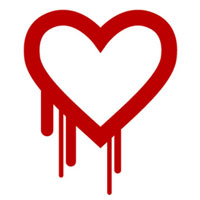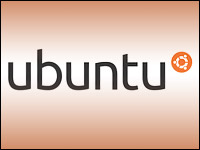
A group of large and small IT companies and institutions have signed the Open Cloud Manifesto, pledging to work together to establish and promote open standards in cloud computing.
Officially, there are now 38 signatories — a group that includes IBM, AT&T, Sun Microsystems, Novell, Rackspace and SAP.
However, there are 17 additional supporters in the pipeline who haven’t yet made it to the list, IBM spokesperson Kelly Sims told LinuxInsider.
The number of supporters will officially reach 55 very shortly, she said.
Whither Microsoft?
Microsoft, Google, Salesforce.com and Amazon are highly unlikely to be in that next batch. Since the manifesto surfaced, much has been made of the absence of these major players.
The purported reason for their nonparticipation is that they do not support the manifesto’s premise of open standards for cloud computing. There have also been reports that at least some of these companies — Microsoft, for example — did not receive the document until the last minute.
That is not true, Sims said.
The manifesto is the result of conversations vendors have been having with their customers and each other over the role standards should play in cloud computing.
Google, in fact, was part of the early endeavor, supporting much of the language in the manifesto, Sims said, but did not sign due to internal policy concerns.
Google did not return a call to LinuxInsider in time for publication.
“Vendors have been hearing concerns from clients about the real possibility of vendor lock-in,” explained Sims. “Companies don’t want to invest money in a technology that will lock them into one standard.”
This is also an education push of sorts, she added. “There are companies out there that assume the cloud is open-standards-based. That is not necessarily true.”
The point of the manifesto is to clearly articulate the premise that cloud computing should be based on open standards.
“The industry needs an objective, straightforward conversation about how this new computing paradigm will impact organizations, how it can be used with existing technologies, and the potential pitfalls of proprietary technologies that can lead to lock-in and limited choice,” the manifesto begins.
Later versions of the document will define what those standards might be.
Noble Goal
The Open Cloud Manifesto’s goal — interoperability between technologies — is a noble one, Steve Merkel, director of solution engineering for Latisys, told LinuxInsider. Still, he is not surprised to see some vendors hesitate to embrace the creed, mainly because it is in their best interests not to.
“The two biggest proponents [of the Open Cloud Manifesto] I’ve seen are IBM and Cisco, both of which would likely win regardless of what happens at the software layer,” said Merkel. “All of the cloud players will need compute and network capabilities, and both of these players are well positioned to solve these needs.”
Conversely, the companies that have not signed — Salesforce.com, Amazon, Microsoft, etc. — are positioning themselves to be those cloud players, investing significant capital into creating their systems.
“Consequently, the cloud players will want to create functional differentiators that set them apart from the competition, and some of these differentiators may be proprietary in nature,” Merkel pointed out.
The conversations surrounding this issue are not unlike those surrounding operating system development, he concluded. “I would say we only need to look at that technology segment to predict what will happen here.”
History Lesson
Indeed, history suggests there’s a need for overt guidance in this area.
“There are many parallels to what we learned from the success of the PC over the past 20 years, and in my opinion, only an open approach to cloud computing will guarantee its long-term success,” said Gerhard Eschelbeck CTO of SaaS at Webroot.
“Most importantly, such standards need to keep the customer in mind and to promote interoperability between the cloud providers,” he told LinuxInsider.
Over the past 40 years, hardware manufacturers needed regulatory and legal “reminders” to help control themselves from bundling higher-level software services within their offerings, remarked Jon Brody, VP at TriCipher.
“I would argue that the cloud computer providers will need similar scrutiny to be sure their services leave the market open for higher level services like security, system management and applications,” he told LinuxInsider.
Marketing Tool
Taking a utopian view of the manifesto’s goals is hardly a universal reaction, however.
As IBM, Sun and a few other players poke a stick through the bars at Microsoft, it’s another fantastic example of manifesto as marketing tool, Robert Rose, vice president of marketing and strategy at CrownPeak, told LinuxInsider.
“One should remember that the manifesto is frequently the tool of smart marketers in order to drive home a set of product differentiators,” he observed. “Does anyone remember the Microsoft at Work proposals for a standard set of communication protocols and status codes?”





















































